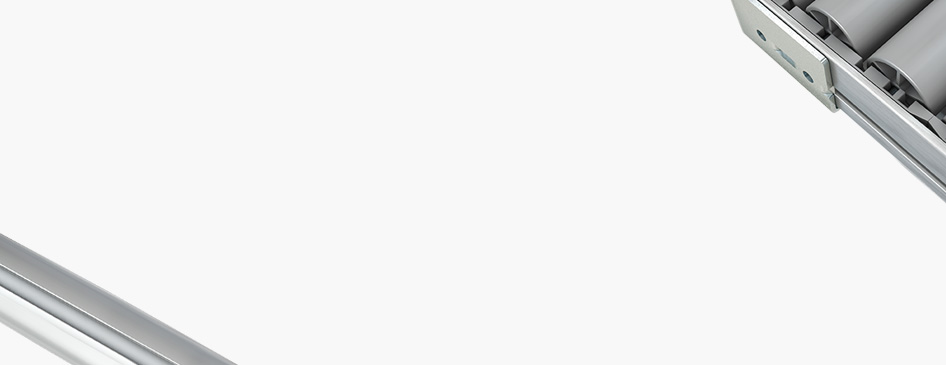
Seleccione uno
o más idiomas
0,1,3
- Alemán
- Inglés
- Chino
- Español
Acero templado y revenido
Los aceros templados y revenidos son aceros endurecidos con y sin aleación cuyas resistencias a la tensión y a la fatiga son mejoradas mediante el endurecimiento y el templado.
Es posible influenciar los procesos de endurecimiento de transformación y templado subsecuente mediante la temperatura de endurecimiento, enfriado, la duración del templado y la temperatura de templado. También son posibles la carburación y la nitruración, sujetas a los ambientes y procesos adecuados. La tenacidad máxima se logra usando la normalización para crear una (micro) estructura de veta fina antes del templado y revenido.
Los aceros templados y revenidos tienen contenidos de carbono de un 0.2 a 0.65 %. Los constituyentes como el níquel, molibdeno, cromo y manganeso son orientados para este uso propuesto. La endurecibilidad es determinada usando la prueba de revenido final.
El acero templado y revenido se usa cuando los componentes están sujetos a esfuerzos estáticos, dinámicos o cíclicos y donde se requiere de buena resistencia al desgaste, resistencia a la tensión e insensibilidad de muesca (en cigüeñales, bielas, pernos y tornillos, por ejemplo). A menudo también se requiere de buena maquinabilidad. Si los aceros templados y revenidos van a ser soldados, se debe considerar la composición cuando se precalienten para prevenir la fragilización y el agrietamiento.
Los aceros templados y revenidos pueden formularse de manera diferente, por ejemplo, para conformado en frío o conformado en frío masivo (templado y revenido después del conformado), para mejorar la endurecibilidad (constituyente de boro) o para optimizar la resistencia (constituyente de níquel).
Vergütungsstahl
Als Vergütungsstähle werden unlegierte und legierte härtbare Stähle bezeichnet, deren Zug- und Dauerfestigkeit durch Härten und Anlassen (Vergüten) erhöht wird.
Während des Umwandlungshärtens und beim späteren Anlassen kann gezielt durch Härtetemperatur, Abschrecken, Anlassdauer und Anlasstemperatur Einfluss genommen werden. Bei geeigneten Umgebungen und Verfahren ist auch Aufkohlen und Nitrieren möglich. Höchste Zähigkeit wird erreicht, wenn vor dem Vergüten durch Normalglühen ein feinkörniges Gefüge erzielt wird.
Vergütungsstähle haben Kohlenstoffgehalte zwischen 0,2 und 0,65 Prozent. Komponenten wie Nickel, Molybdän, Chrom oder Mangan werden auf den Verwendungszweck abgestimmt. Per Stirnabschreckversuch wird die Härtbarkeit ermittelt.
Verwendet wird Vergütungsstahl dort, wo Bauteile statischen, dynamischen oder schwingenden Beanspruchungen ausgesetzt sind sowie VerschleißFestigkeit, Zugfestigkeit und Kerbunempfindlichkeit gefordert sind (etwa für Kurbelwellen, Pleuelstangen, Bolzen und Schrauben). Gewünscht ist oft eine gute Zerspanbarkeit. Das Schweißen von Vergütungsstählen erfordert ein auf die Zusammensetzung abgestimmtes Vorwärmen, um Versprödung und Rissbildung zu vermeiden
Vergütungsstähle können unterschiedlich eingestellt werden, etwa zum Kaltumformen, Massivkaltumformen (Vergütung nach der Umformung), auf bessere Härtbarkeit (Borkomponente) oder höchste Festigkeit (Nickelkomponente).
Quenched and tempered steel
Quenched and tempered steels are unalloyed and alloyed hardenable steels whose tensile and fatigue strengths are improved by Hardening and tempering.
It is possible to influence the transformation hardening and subsequent Tempering processes by means of the hardening temperature, quenching, the duration of tempering and the tempering temperature. Carburising and nitriding are also possible subject to appropriate environments and processes. Maximum Toughness is achieved by using normalising to create a fine-grained (micro)structure prior to quenching and tempering.
Quenched and tempered steels have Carbon contents of between 0.2 and 0.65 percent. Constituents such as nickel, molybdenum, chromium and manganese are geared to the intended use. Hardenability is determined using the end quench test.
Quenched and tempered Steel is used where components are subject to static, dynamic or cyclic stresses and where good Wear Resistance, tensile Strength and notch insensitivity are required (in crankshafts, connecting rods, bolts and screws, for example). Good machinablity is also often required. If quenched and tempered steels are to be welded, the composition must be taken into account when pre-heating to prevent embrittlement and cracking.
Quenched and tempered steels can be formulated differently, for example for cold Forming or massive cold forming (quenching and tempering after forming), to improve hardenability (boron constituent) or to optimise strength (Nickel constituent).
调质钢
调质钢是非合金或合金的淬硬性钢,通过淬火硬化和回火增强了其拉伸强度和疲劳强度。
通过改变硬化温度、淬火、回火的持续时间和回火温度,可能影响转变硬化和随后的回火工艺。在适当的环境和工艺条件下,也可进行渗碳和渗氮处理。在淬火和回火工艺前可先进行正火处理,在钢中形成细晶粒结构,以达到最大的韧性。
调质钢的碳含量为0.2~0.65%。根据预期的用途,可在调质钢中掺入如镍、钼、铬和锰等成分。通过末端淬火试验可以确定钢的淬透性。
调质钢适用于制造承受静应力、动态应力或循环应力的构件,和要求具有良好的耐磨性能、拉伸强度和没有缺口敏感性的构件(如曲轴、连杆、螺栓和螺钉)。常常还要求构件具有良好的机械加工性能。
调整钢的合金配比可以有所不同。如通过冷成型或整块材料冷成型(成型后进行淬火和回火),以增强钢的淬透性(加入硼)或增强钢的强度(加入镍)。
